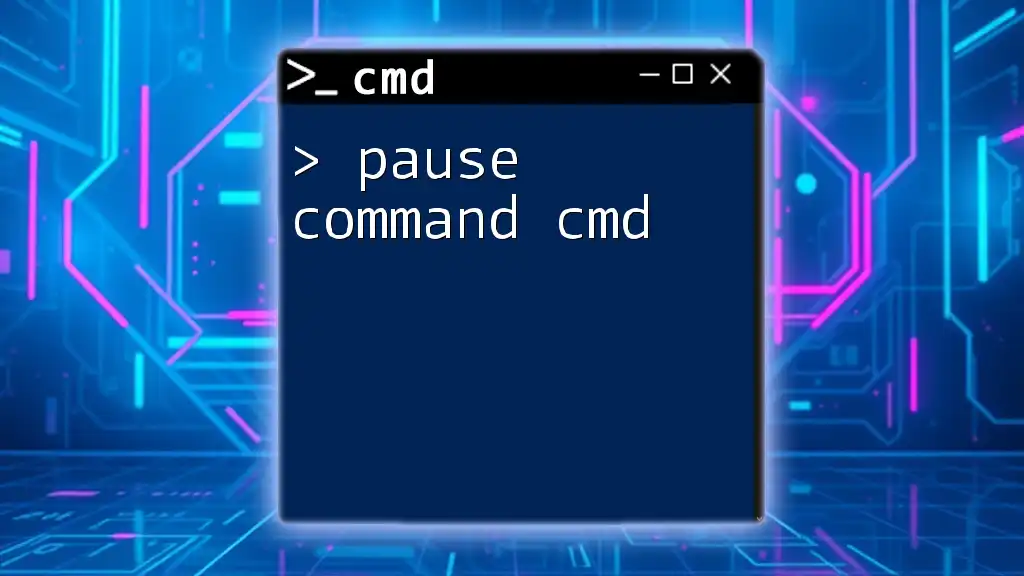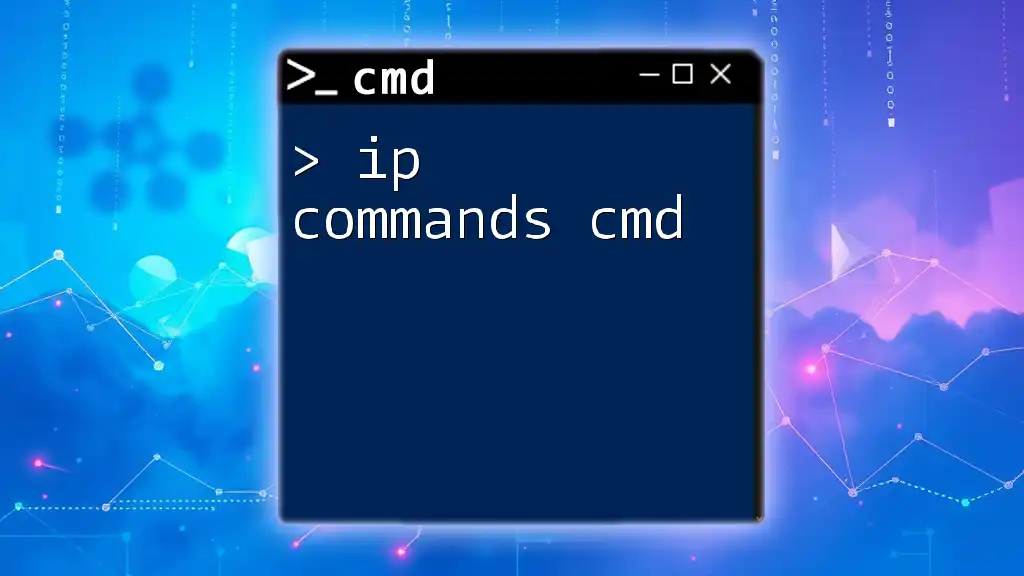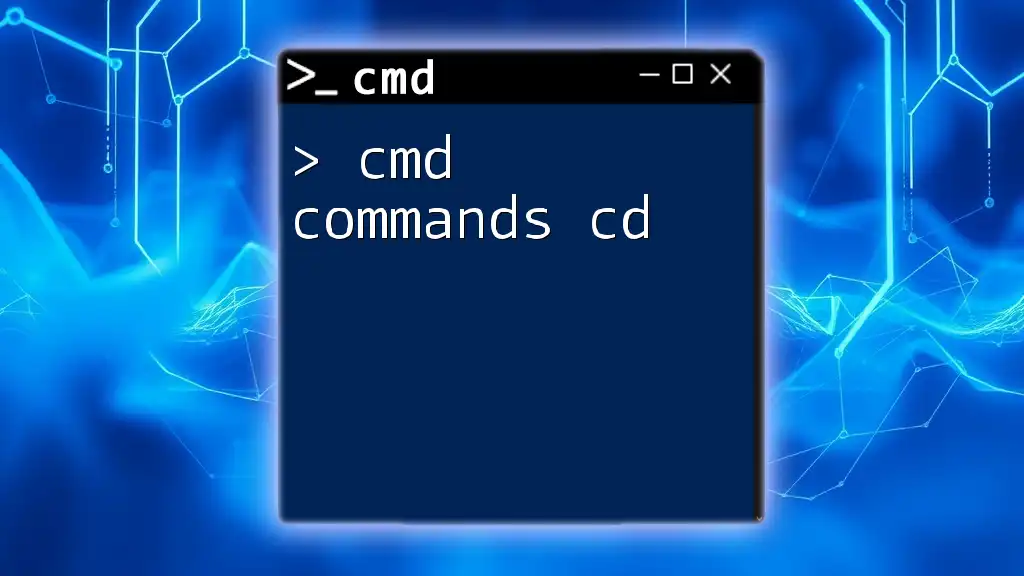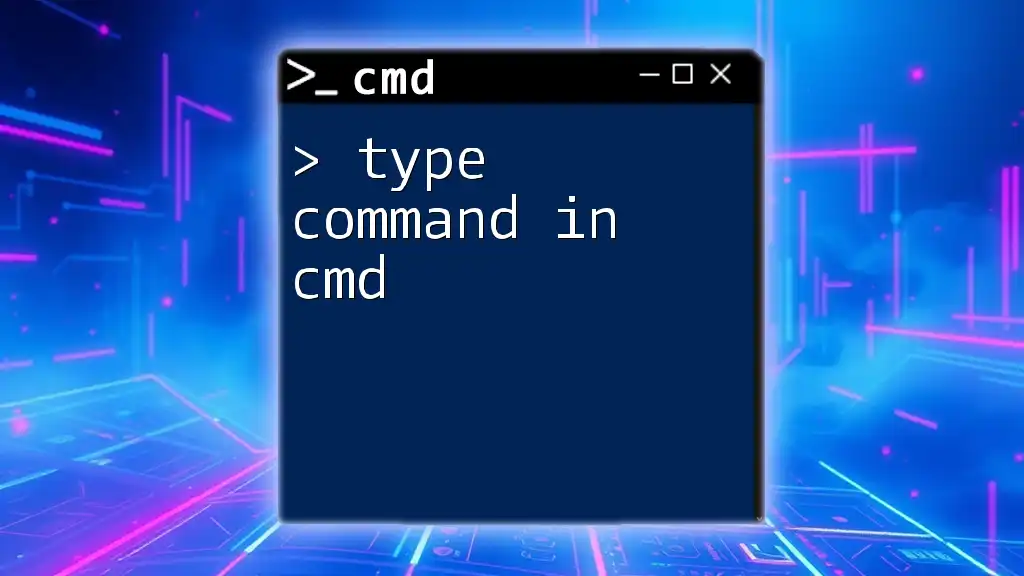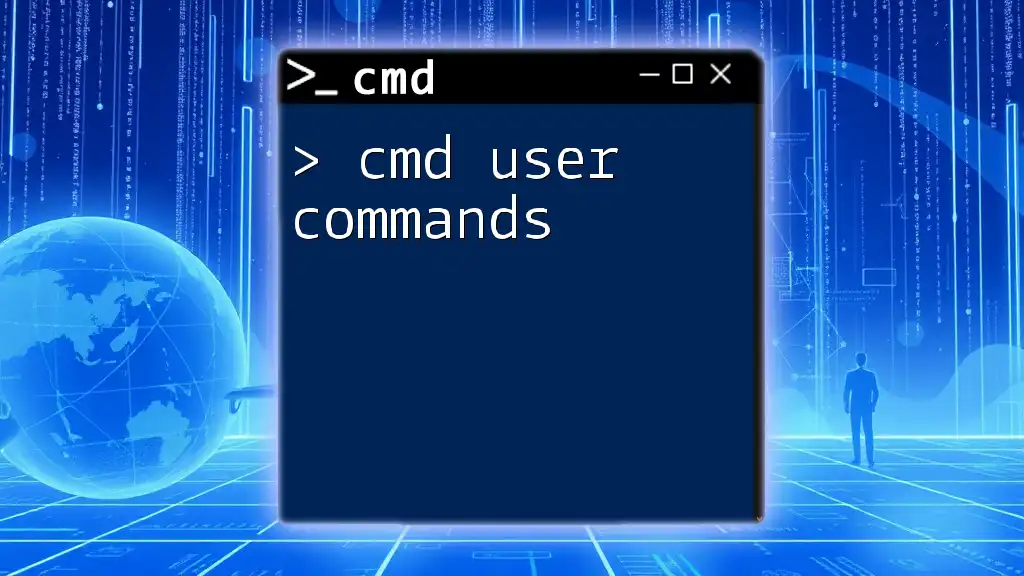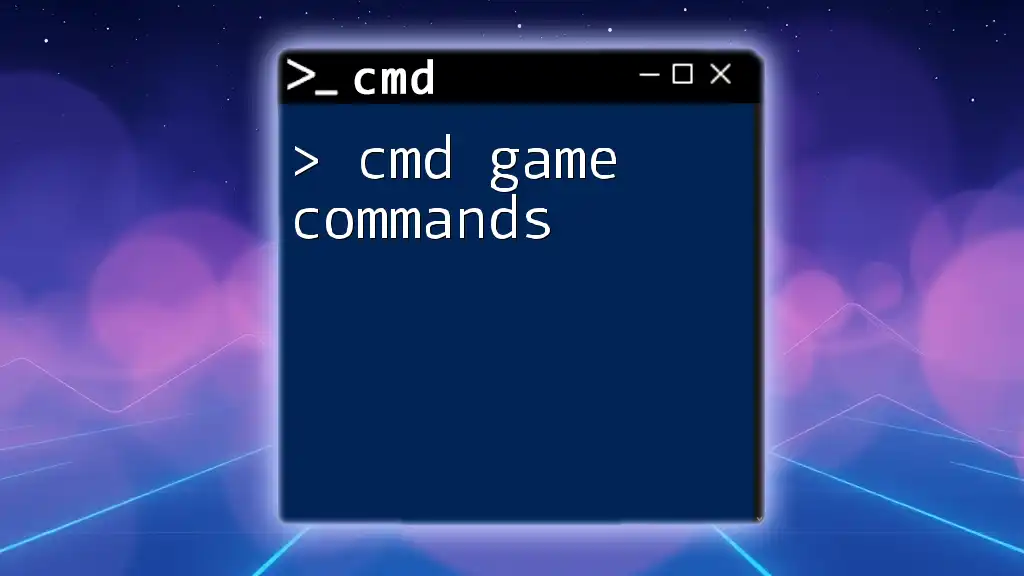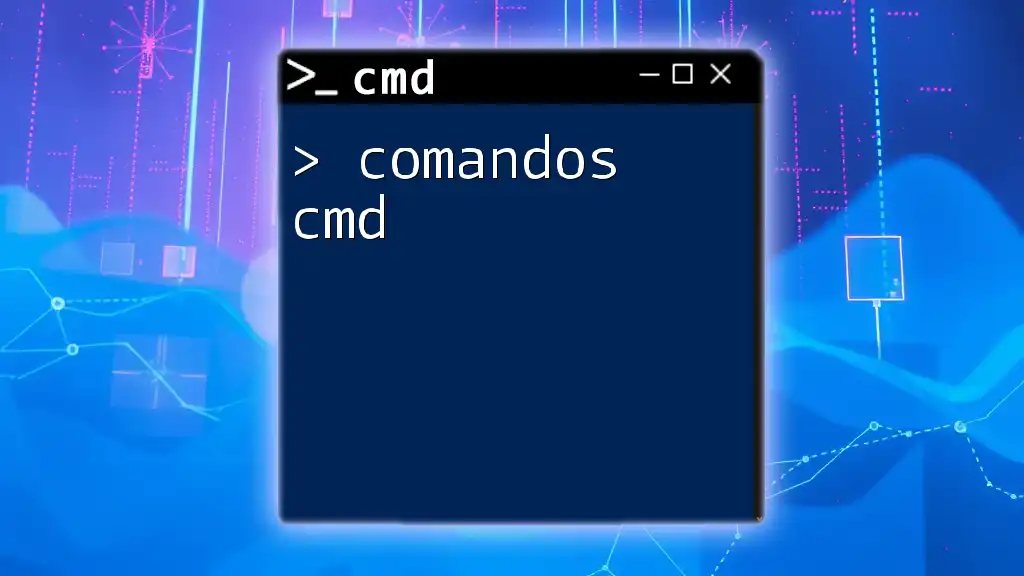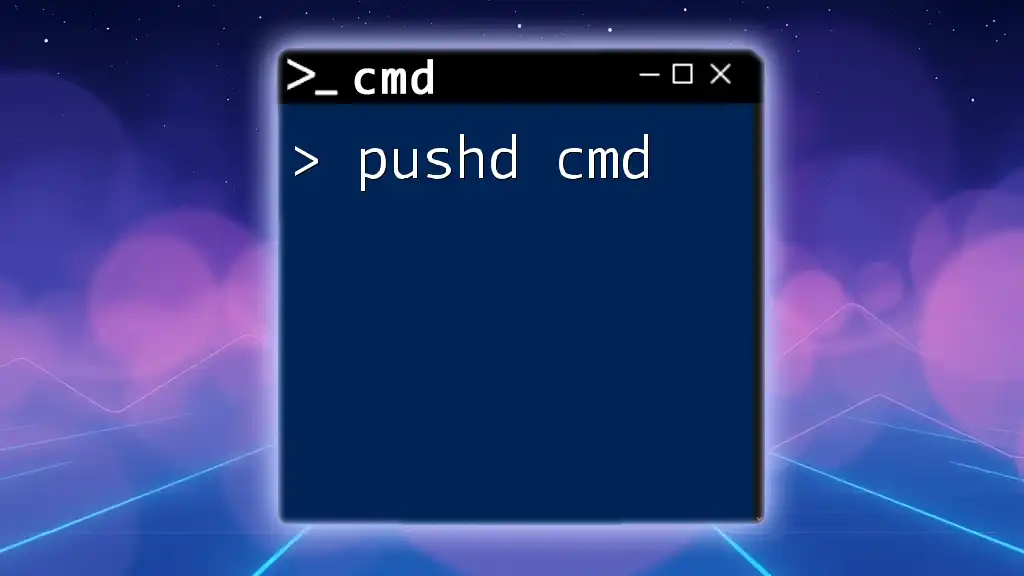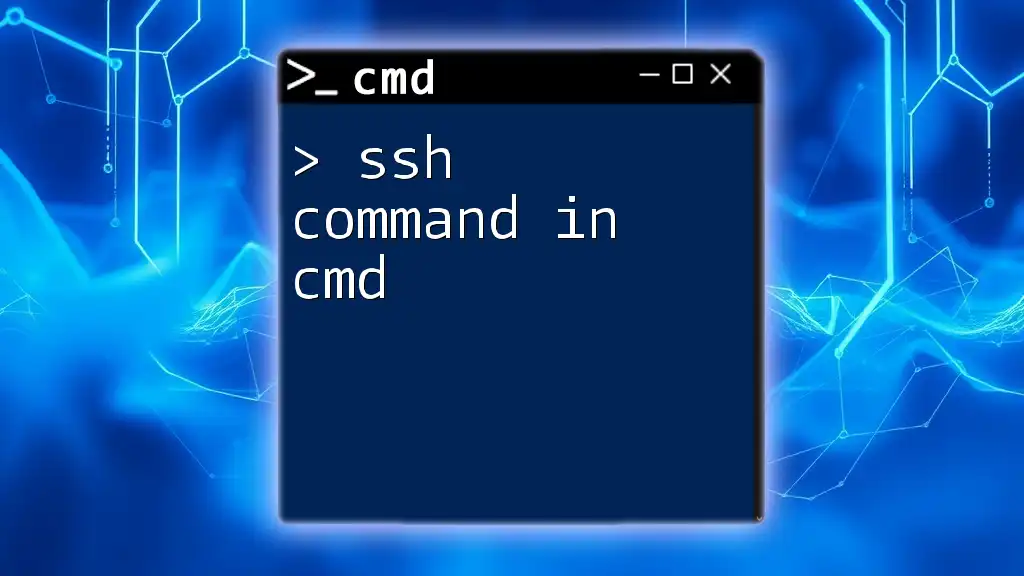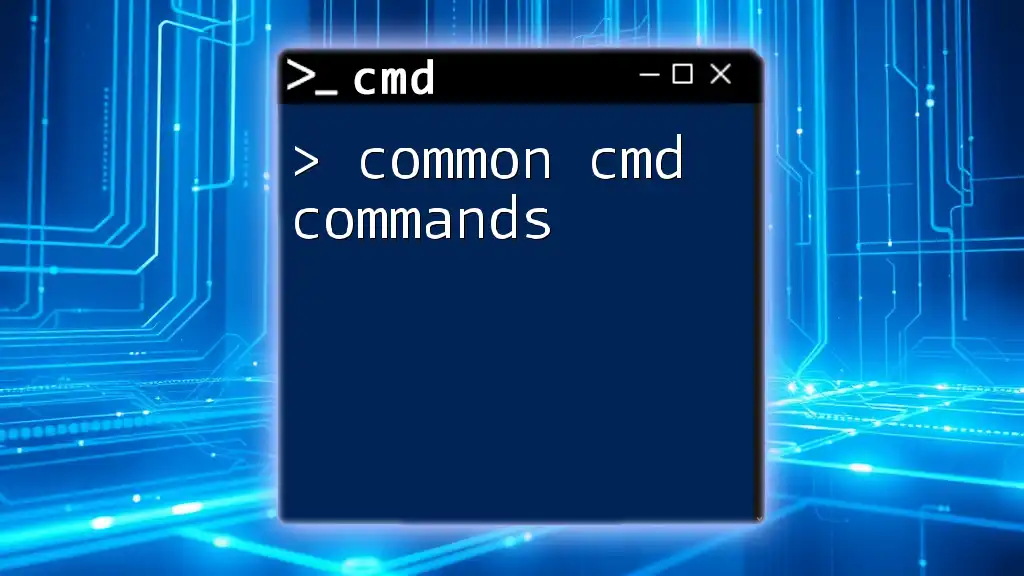The `pause` command in CMD temporarily halts the execution of a batch script and prompts the user to press any key to continue.
@echo off
echo This is an example script.
pause
echo The script has resumed.
What is the "Pause" Command in CMD?
The "pause command cmd" is a simple yet powerful command available in the Windows Command Prompt (CMD). It is primarily used to halt the execution of a script or a batch file until the user provides input by pressing any key. This functionality can be incredibly useful when you want to give users time to read an important message or to debug scripts by checking intermediate outputs.
How the "Pause" Command Works
The syntax for using the pause command is straightforward:
pause
When executed, CMD displays the message “Press any key to continue . . .”, effectively placing the script in a waiting state. This allows users to take a moment before proceeding with the next commands in the script.
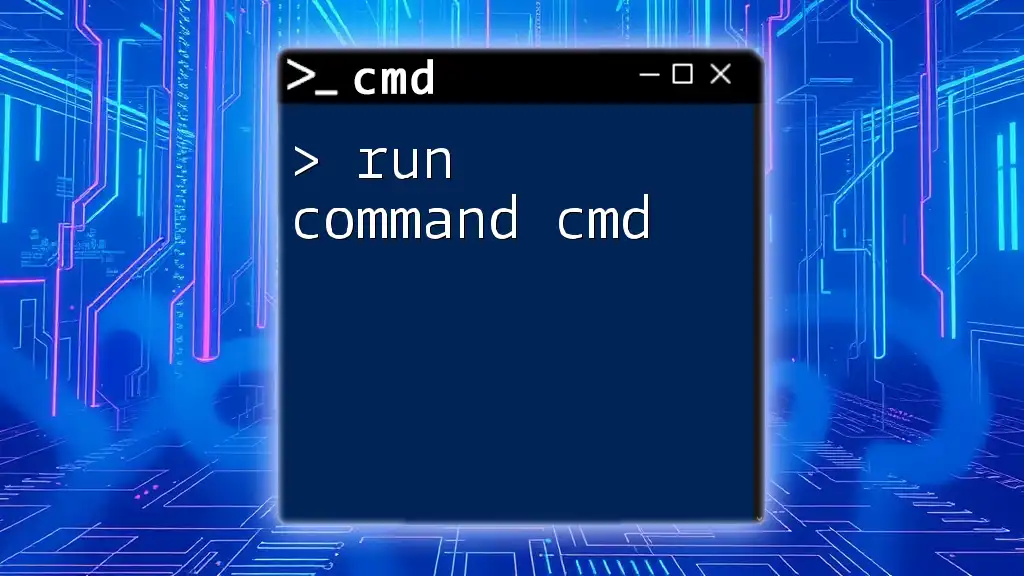
How to Use the Pause Command
Basic Usage of Pause in CMD
To utilize the pause command in CMD, follow these simple steps:
- Open the Command Prompt.
- Type `pause` and hit Enter.
Upon executing this command, the command prompt will halt, and you'll see the message mentioned earlier. This basic use of the pause command is perfect for quick tests or when you want a moment to verify command outputs.
Using Pause in Batch Files
Batch files allow you to automate multiple command executions in one go. Here’s how to use the pause command in a simple batch file:
- Open Notepad or any text editor.
- Write the following script:
@echo off
echo This script will pause for your input.
pause
echo Thank you for continuing!
- Save the file with a `.bat` extension, for example, `PauseExample.bat`.
- Double-click the saved file to execute it.
In this script, when you run the batch file, it’ll display a message prompting the user to "Press any key to continue . . .". Once a key is pressed, it resumes and completes the script by thanking the user.
This is an effective way to incorporate pauses in scripts for user interaction or simply providing a moment of reflection on the task completed.
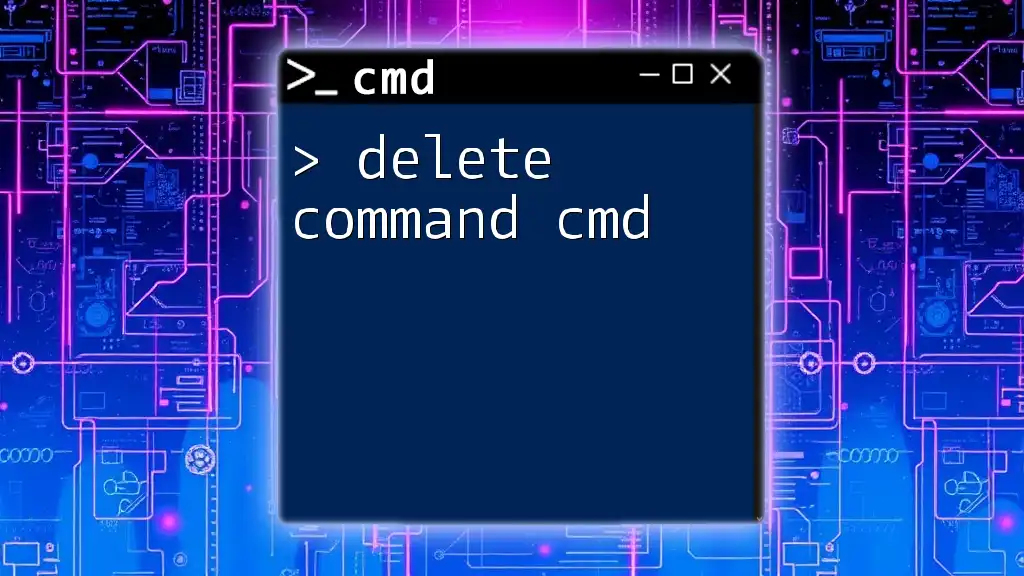
Advanced Usage of Pause
Combining Pause with Other Commands
The pause command can be seamlessly integrated with other CMD commands to enhance the functionality of your scripts. Here’s an example using multiple commands in a batch file:
@echo off
echo Starting the process...
pause
echo Process complete.
In this example, the script begins by indicating that a process is starting, pauses for user input, and then informs the user when the process is complete. This structure is beneficial when you want the user to acknowledge the start of a sequence before continuing.
Handling Errors with Pause
Using the pause command in conjunction with error handling can significantly improve the user experience. For instance, you might want to pause the script if an error occurs:
@echo off
echo Checking for errors...
if errorlevel 1 (
echo An error occurred.
pause
)
In this script, if any command returns an error (i.e., an error level of 1 or more), the script will notify the user of the error and pause execution until they take further action. This provides a clear indication of where the issue lies and allows for user intervention before continuing.
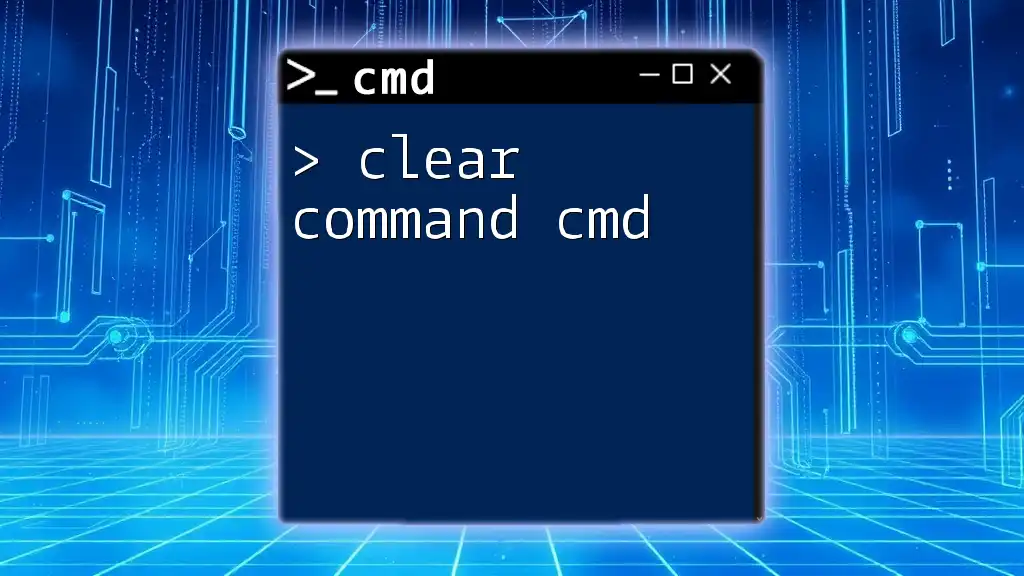
Best Practices for Using Pause in CMD
When to Use "Pause"
Knowing when to incorporate the pause command can dramatically improve the usability of your scripts. Use pauses when:
- You want users to read and understand important messages before moving on.
- You need to debug scripts interactively to check outputs at various stages.
- You want to ensure the completion of tasks before prompting users for further input.
However, be mindful not to overuse the pause command. Excessive pauses can frustrate users, especially if they expect a smooth execution of commands.
Alternatives to Pause
While the pause command is tremendously useful, you may also explore other options, such as using the `timeout` command. For instance:
timeout /t 10
This command pauses execution for 10 seconds without requiring user intervention, making it suitable for scenarios where a fixed wait time is needed.

Common Issues and Troubleshooting
Common Mistakes with the "Pause" Command
Some typical errors when using the pause command include:
- Forgetting to include the command in scripts, which leads to scripts executing without any user input.
- Running scripts without administrative privileges when certain commands require higher permissions, causing them to fail before reaching the pause.
To troubleshoot, ensure you include the pause command where necessary and verify that you're executing scripts in the correct environment.
FAQs about the Pause Command
When learning about the pause command, you may have some questions:
-
How do I skip a pause? Unfortunately, there is no built-in way to skip a pause in a batch file once it has been executed. However, you can structure your scripts to conditionally include pauses based on specific inputs.
-
Can the pause command be customized? The pause command is fixed in its function—displaying the standard message. However, you can design your scripts to include additional prompts or instructions before or after the pause command.
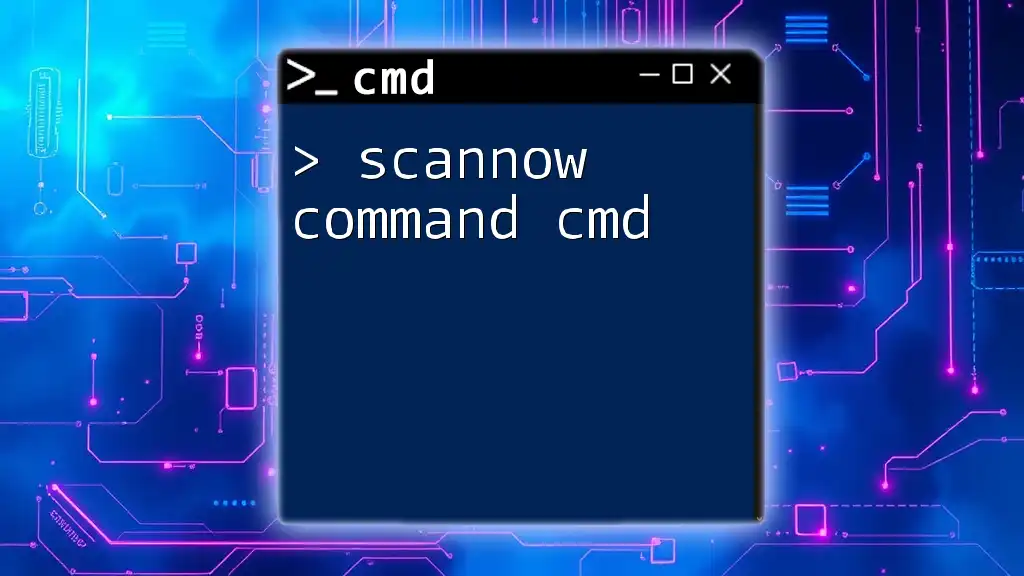
Conclusion
Understanding the "pause command cmd" is essential for anyone wishing to become proficient in CMD and batch scripting. By implementing this command thoughtfully in your scripts, you can greatly enhance user interaction and create more dynamic and user-friendly command-line programs. Don't hesitate to experiment with it in your own scripts, and observe how it improves the flow of your commands.
As you embark on your CMD journey, remember that practice and experimentation are key to mastering this powerful tool. If you have any experiences, questions, or suggestions about using the pause command, feel free to share!

